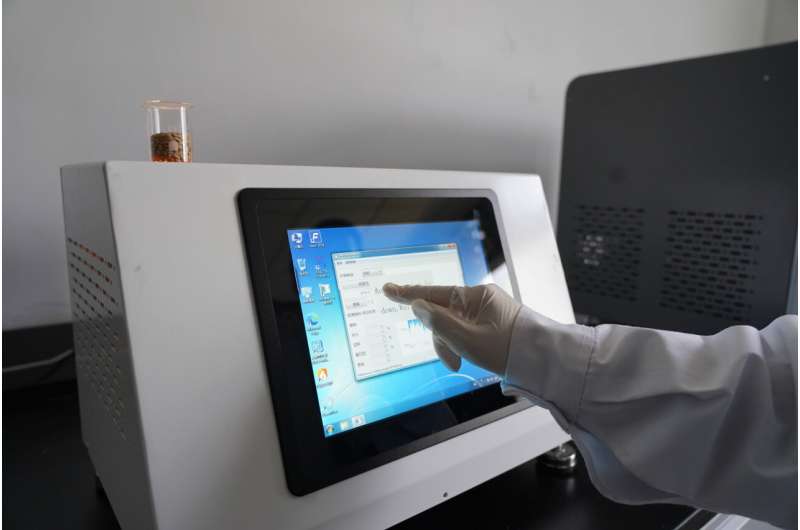Portable cereal quality rapid detector developed for efficient and accurate crop detection

Quality inspection of cereals runs through the whole process from grain production to consumption. Traditional grain quality detection methods are mainly wet chemical analysis methods, which are time-consuming, labor-intensive, low accuracy, highly subjective, and will cause environment pollution.
Scientists from the Hefei Institutes of Physical Science (HFIPS) of the Chinese Academy of Sciences (CAS) developed a set of portable cereal quality rapid detectors based on near-infrared spectroscopy (NIRS) to improve the efficiency and accuracy of crop detection.
"We have been working with companies in cereal industry to know their urgent needs," said Prof. Wang Qi, who leads the team. "When we learn about their needs, the first thing that came to our mind is NIR, a non-destructive, rapid and simultaneous detection method."
Based on the NIR method, the instrument realized fast and accurate detection of cereal quality including edible quality, storage period, protein data, amylose, fat and moisture content of cereal (rice, wheat and corn), thus speeding up the process of purchasing, storing and transportation.
Main obstacles in the experiment
When they made their goal, the priority was to prepare an integrated platform based on NIR technology.
The R&D team included engineers from various disciplines such as optics, computer, agronomy and biology. They collected samples, integrated equipment, developed software and constructed models.
Another difficulty they faced then was how to obtain representative calibration samples and test data, which are at the core of the device's functionality.
"We contacted seed companies and many scientific research institutes," said Xu Zhuoping, member of the team, "they sent us representative samples with different traits."
A large number of chemical experiments were carried out to obtain necessary test data, and a database was constructed. Under the iterative training of a large amount of data, an accurate analysis model was built to realize various detection functions.
Advantages of a portable cereal quality rapid detector
There is no complete testing model for similar instruments on the market. The detection function needs to be developed by the user themselves, which poses a high barrier to the use of these instruments. And a convenient instrument is necessary to improve the efficiency.
"We heeded the call," said Prof. Wang, "our instrument integrates various detection functions specifically suitable for domestic food production application scenarios. It only takes 20 seconds for the machine to tell all the data."
Plan for the future
The team still plan to do more to give users best experience possible.
"Our next goal is to lower the cost and optimize the structure of the instrument by further miniaturization," said Prof. Wang. "We will strive to provide more detection functions and improve the detection accuracy of the model, thus better serving the grain industry."
Provided by Chinese Academy of Sciences




















